The flamacue combines a partial single stroke roll with flams. The accent on the ‘e’ can be tricky to nail at first, but this drum rudiment sounds great in fills and solos, and learning it will help you improve your stick control.

The flamacue takes a single stroke five and adds a flam to the first and last note.
There’s an accent on the second note of the grouping (the ‘e’) which gives it a unique sound and feel when played at full speed.
Here’s what it sounds like:
You can use this tool to practice along at the tempo that’s best for you (it’s the one Drumeo members use when practicing with the 3000+ play-along tracks inside our members area).
► Click here if you want to learn how to read drum music
You should master the single stroke five and the flam before learning this rudiment. Tight double stroke technique and a good grasp of the paradiddle will help you nail the transitions between the note that falls on the ‘a’ and the grace note before the final flam.
Start by practicing the single stroke five. Then add in the flams. Finally, when you’re ready, add the accent.
The biggest challenge here is consistency. Your flams should be tight and there should be very little space between the grace note and the primary note.
Here are some tips to help your flamacues.
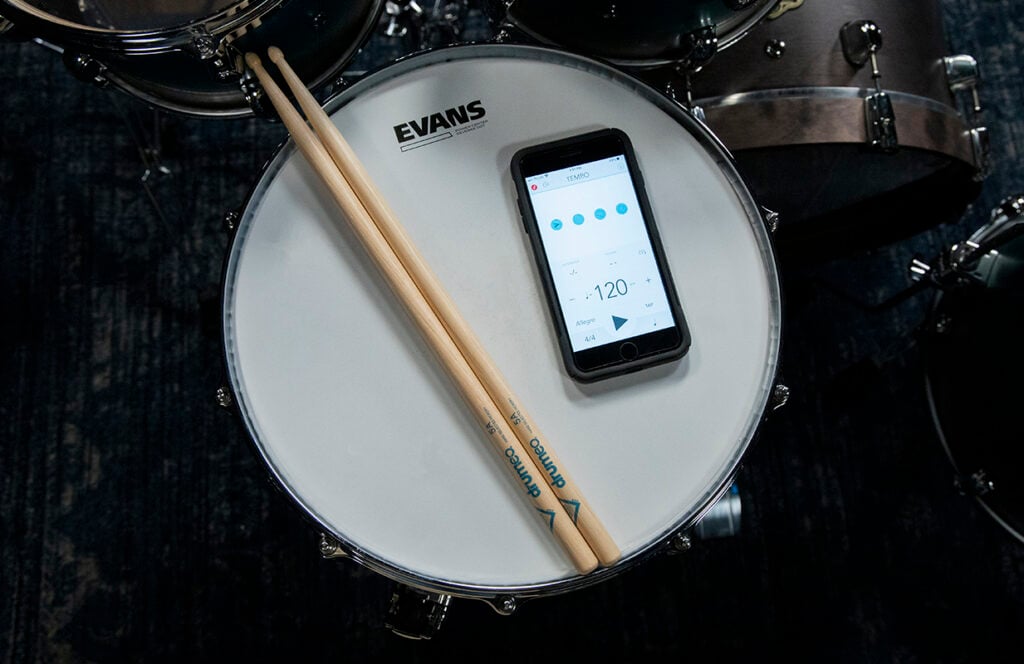
When you’re first learning how to play something, it’s fine to test it out without a metronome as you get used to the pattern. But you shouldn’t go click-free for long. The metronome will help you develop a better internal clock and show you exactly where the timing of your strokes is inconsistent (or where it’s right on the grid).
You can buy a physical metronome at a music store or download a metronome app online.
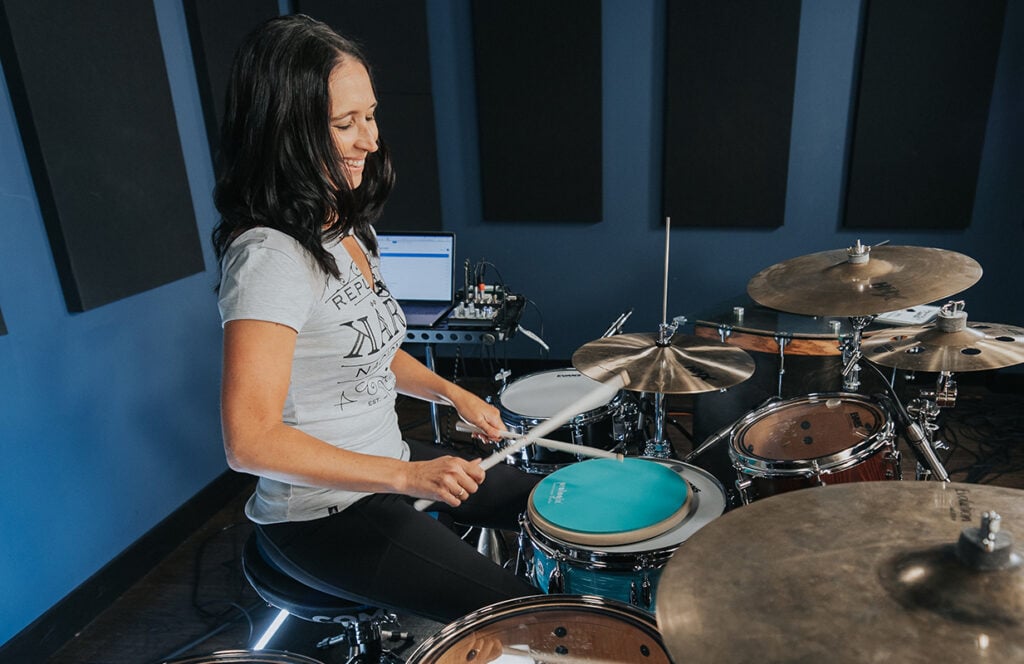
While it might be tempting to get up to speed as quickly as possible – especially if you’re feeling confident – make sure you’re really starting each flam with a soft grace note and that you’re nice and relaxed.
Be honest with yourself and don’t increase the tempo until you’ve really got it down. Don’t just say “it’s good enough”. Develop control first, and speed will come later.
Try setting your metronome to 60 BPM and slowly work your way up 5 BPM at a time.
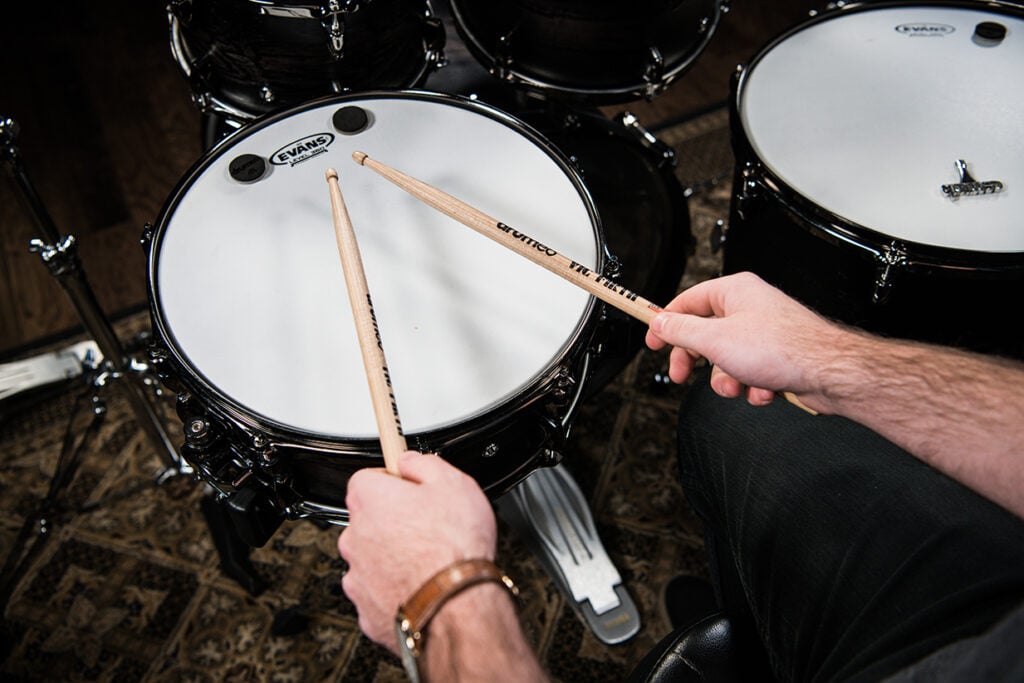
If you’re a right-handed drummer, you probably default to starting everything with your right hand. Make sure you practice starting with your left hand too. This will give you more confidence and control.
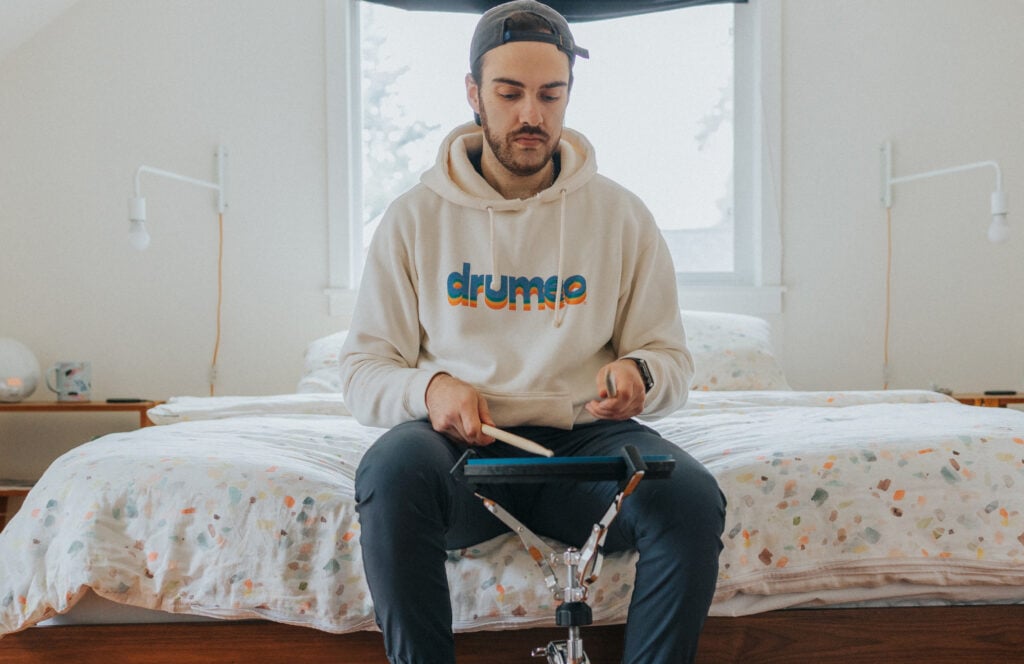
It’s easiest to correct your posture or grip immediately if you’re watching yourself in a mirror. Try to set up a practice pad and a snare stand in front of a full length mirror if you can.
You’ll be able to notice if you’re gripping your sticks too hard, or if your stick height doesn’t look right. Use your reflection as a window into how you’re doing. It’s like becoming your own drum teacher!
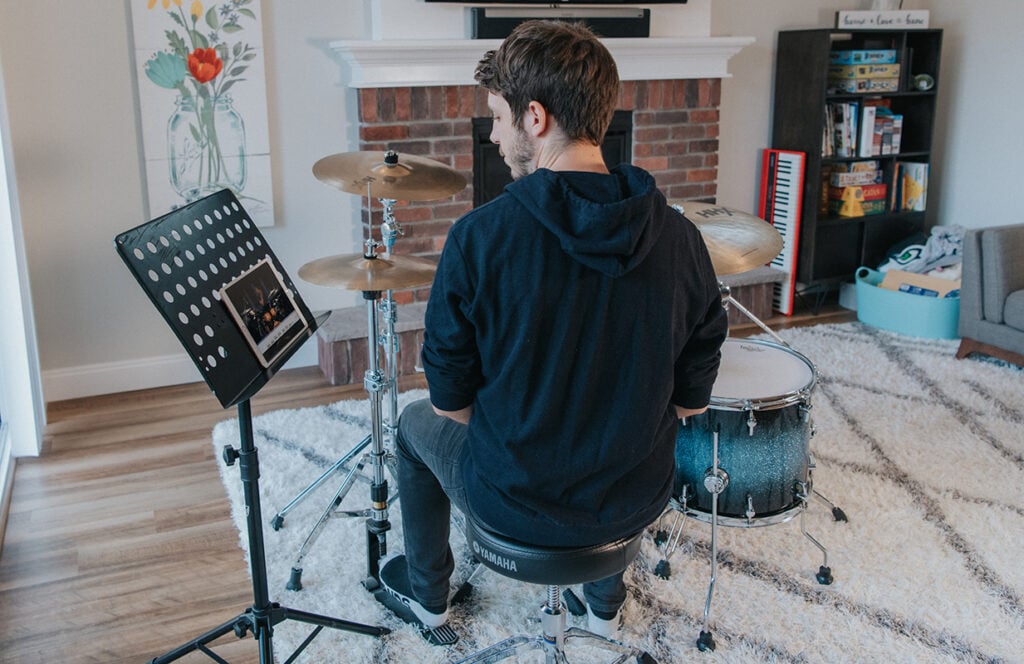
While playing in front of a mirror will help you fix issues on the fly, you might not realize during your practice when something is wrong. Sometimes we don’t notice issues while we’re in the middle of playing – especially if we’re concentrating hard.
Whether you’re propping your phone on your dresser or capturing it all with a camera and tripod, it’s helpful to watch your practice sessions and critique yourself from a ‘third party’ perspective.
We’ve put together a playlist with drumless tracks at different tempos so you can practice this rudiment over real music:
Once you’re comfortable playing it on a practice pad or a single drum, try moving it around the drum set.
You can keep the pattern on one drum or break it up between multiple surfaces. Try the following exercises to get started.
#1:
#2:
#3:
#4:
#5:
Any surface can be part of the pattern! If you’re a more advanced drummer, you could even challenge yourself to break up the sticking between your hands and feet.
The flamacue is just one of many rudiments that’ll give you more creative ideas and control, and it’ll challenge you to combine several skills you already know.
With enough solid practice, you should start feeling more confident in your playing. If you can get comfortable with all 40 rudiments, you’ll be able to do virtually anything on the drums.
Try learning the pataflafla next – it’s similar to the flamacue but has a few key differences.


By signing up you’ll also receive our ongoing free lessons and special offers. Don’t worry, we value your privacy and you can unsubscribe at any time.
We use cookies for traffic data and advertising. Cookie Policy »